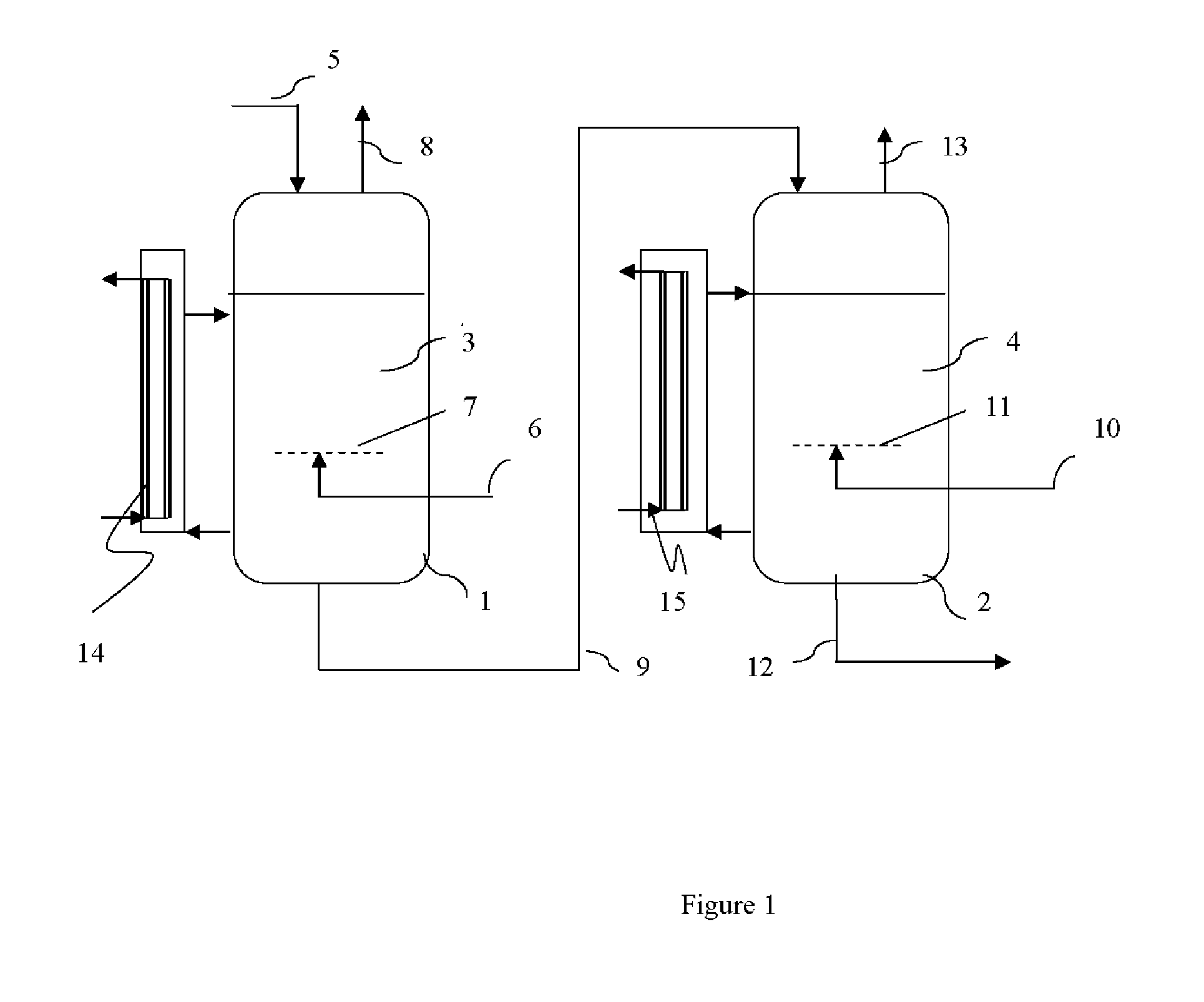Continuous preparation of carbonates
- Summary
- Abstract
- Description
- Claims
- Application Information
AI Technical Summary
Benefits of technology
Problems solved by technology
Method used
Image
Examples
example 1
[0044]Preparation of fluoroethylene carbonate in a 2-reactor cascade
[0045]The apparatus corresponds to the reactor shown in FIG. 1 comprising 2 reactors 1 and 2 in a cascade (the reference numbers correspond to those in FIG. 1). Before the reaction is started, ethylene carbonate and fluoroethylene carbonate are filled into the reactors 1 and 2 so that the resulting mixture contains about 10% by weight of fluoroethylene carbonate; of course, if desired, a respective mixture can be filled into the reactors. The initial addition of fluoroethylene carbonate serves to lower the melting point of ethylene carbonate when starting the fluorination reaction. Liquid ethylene carbonate is then continuously fed to reactor 1 via line 5. A gaseous mixture containing about 15% by volume of F2 and the remainder to 100% by volume being N2, is continuously introduced in the bottom of the first reactor 1 through a line 6 and a stainless steel frit 3. Very small gas bubbles are formed leading to a high ...
example 2
[0048]Manufacture of fluoroethylene carbonate in a 3-reactor cascade
[0049]Example 1 was repeated, but this time, a reactor cascade with 3 consecutive reactors is used. Into the third reactor (which is cooled, like the others, by circulating a part of the reaction mixture in a loop through a cooler), reaction mixture from the second reactor is introduced, and an F2 / N2 gas mixture containing about 15% by volume of F2 is introduced via a gas line and a frit to the reaction mixture of the third reactor, too. The reaction mixture continuously withdrawn from the bottom of the third reactor is treated as described in example 1 to isolate pure fluoroethylene carbonate.
[0050]For a calculation of the respective concentrations of ethylene carbonate, fluoroethylene carbonate and higher fluorinated products, the following assumptions are made:
Reaction temperature: 50° C.
Residence time in each reactor of the 2-reactor cascade: 2
Residence time in each reactor of the 3-reactoer cascade: 1.3
Concentr...
example 3
[0055]Manufacture of fluoromethyl methyl carbonate
[0056]Fluoromethyl methyl carbonate can be manufactured from dimethyl carbonate and a fluorine / inert gas mixture analogously as described in examples 1 and 2. In view of the low melting point of dimethyl carbonate (2 to 4° C.), a solvent is not necessary. The reaction temperature will be kept lower than in the case of examples 1 or 2 to prevent the evaporation of fluoromethyl methyl carbonate. Thus, the temperature of the reaction mixture is kept at about 5° C.
PUM
| Property | Measurement | Unit |
|---|---|---|
| Temperature | aaaaa | aaaaa |
| Temperature | aaaaa | aaaaa |
| Temperature | aaaaa | aaaaa |
Abstract
Description
Claims
Application Information
 Login to View More
Login to View More - R&D Engineer
- R&D Manager
- IP Professional
- Industry Leading Data Capabilities
- Powerful AI technology
- Patent DNA Extraction
Browse by: Latest US Patents, China's latest patents, Technical Efficacy Thesaurus, Application Domain, Technology Topic, Popular Technical Reports.
© 2024 PatSnap. All rights reserved.Legal|Privacy policy|Modern Slavery Act Transparency Statement|Sitemap|About US| Contact US: help@patsnap.com








